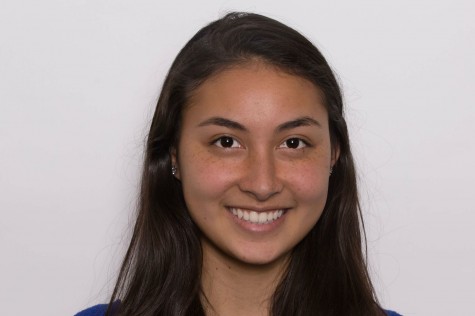District faces allegations of biased math placement
On Friday June 5, the Mountain View Voice published an op-ed by the Lawyers’ Committee for Civil Rights (LCCR), a local advocacy group. The op-ed alleged that African-American and Latino students of the Mountain View Los Altos (MVLA) school district were being misplaced into lower-level math classes for their freshman year. LCCR specifically called for the district to adopt a written placement policy.
“Math misplacement occurs when schools lack written, transparent math placement policies that ensure that students are automatically advanced in their math sequence when they start ninth grade,” Isaac said. “Subjective factors allow implicit bias and other outside factors to influence a student’s placement.”

The op-ed argued that the low number of minority employees in Science, Technology, Engineering and Math (STEM) fields is connected to the misplacement of minority students into lower math classes. It was written by LCCR attorneys Dana Isaac and Oren Sellstrom and followed the publication of a June 4 Mountain View Voice news article about the allegations.
“The [LCCR] sent out a lengthy press release to local media, and then approached us with a guest opinion submission,” Mountain View Voice editor Andrea Gemmet said. “We wanted to dig deeper into the claims they were making, so [Forestieri] got a copy of the study, conducted interviews and wrote the story.”
The LCCR’s recent work has been a followup to its 2013 report about ninth grade math misplacement in Bay Area school districts. The report, “Held Back,” which took data from a 2010 Noyce Foundation study, the “Pathways Report,” found that Latino and African-American students were being placed in lower-level math classes than Caucasian or Asian counterparts with similar test scores. The study took data from nine school districts within San Mateo and Santa Clara county and looked at the placement of eighth grade students in the 2006-2007 school year.
Since publishing their report, the LCCR has singled out MVLA based on new data it has acquired, showing that African-American students, who make up 2 percent of the MVLA district, and Latino students, who make up 24 percent of the district, were being scheduled to repeat Algebra I freshman year despite having test scores that made them eligible to take Geometry instead.
The district has called out LCCR for failing to speak to them before publishing their findings. MVLA Associate Superintendent Brigitte Sarraf was contacted by the group to provide data, and says that they misinterpreted what it means.
“Most of our students in Algebra I… are not there because they are repeating a course they have already taken or passed,” Sarraf said. “There are many courses in middle schools that… are not the same courses as the standard high school Algebra class — so [LCCR] looked at all of these courses that had algebra as part of the name… not understanding that was not a high school algebra class.”
In calling for a written policy, the LCCR echoed California state Senate Resolution 60, which mandates that school districts “develop, adopt and monitor a fair, objective and transparent mathematics placement policy.”
MVLA’s current policy is open access, meaning that students have the ultimate choice about whether to sign up for any course. Counselors can recommend specific tracks but ultimately cannot force students to follow their recommendations.
According to the Pathways Report, almost the same amount of Asian students who took Algebra I in eigth grade enrolled in Geometry in ninth grade. Similarly, a significant amount of Caucasian students who took Algebra 1 in eighth grade moved on to Geometry in the fall.
In contrast, approximately half of all Latino students took Algebra 1 in 8th grade, but only 16.5 percent went on to Geometry in the fall. Among African-American students, approximately half also took Algebra 1 in eighth grade, and only 17.8 percent took Geometry in the fall.
The LCCR credits these discrepancies in math placement to the fact that many Bay Area school districts do not have an official process for determining appropriate math classes, which can lead to teacher bias influencing the placement of students.
The group suggests that Bay Area school districts write up a written policy on math placement and more tightly control subjective factors to minimize the possibility of biased teacher input. It has pledged to take further action if the district does not implement its findings.
“LCCR is prepared to move forward with a civil rights complaint to the United States Department of Education… if MVLA does not immediately redress this significant problem by implementing an objective and transparent math placement policy,” the group said in a statement on its blog.
However, the district maintains that current policy best serves minority students, and does not plan to make a change.
“Not having a black and white policy for placement benefits the students,” Sarraf said. “It is all about taking the students where they are when they come to us and giving them as much help, support and instruction in order to accelerate as quickly as they are capable of accelerating. This notion of placement and wanting everything to be black and white without any effort to understand what is behind it is, to me, a tragedy.”



